Approved spring halibut fishing dates are the cure for winter blues, plus optimistic changes ahead for coastal bottomfishing season Leave a reply
By Mark Yuasa
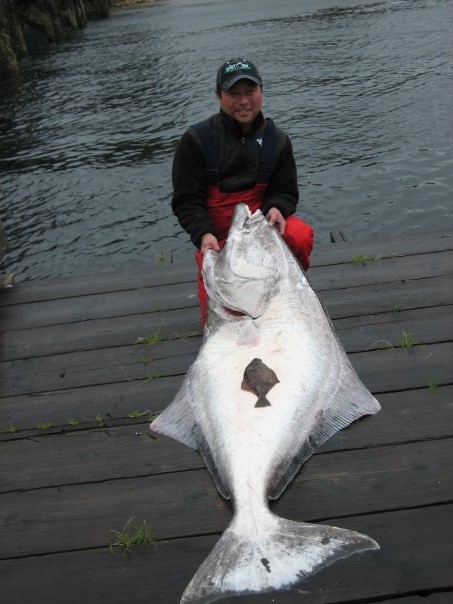
There’s nothing better than the smell of spring in the air especially after our recent “snowmageddon” and while it’s vital to keep close tabs on the upcoming salmon season process, it’s also a time to cure cabin fever by making plans to pursue halibut, lingcod and other bottomfish species in the months ahead.
“The halibut quota provides for a really nice fishing opportunity in all our areas,” said Heather Hall, a WDFW fish policy coordinator who recently attended the International Pacific Halibut Commission (IPHC) meeting.
At the virtual meeting in late January, the IPHC approved a 1.65-million-pound catch quota for sport, non-tribal and tribal fisheries in Washington, Oregon and California.
The 2021 sport catch quota is 287,033 pounds in Washington. A breakdown by area is 77,500 pounds for Puget Sound-Strait of Juan de Fuca fisheries; 128,187 for Neah Bay/La Push; 62,896 for Westport; and 17,950, plus 500 for a near-shore fishery off Ilwaco. Areas will close once projected catch quotas are achieved.
“All the fishing dates are good to go and we’re awaiting (the National Marine Fisheries Service) to sign off in March,” Hall said. “There are no questions moving forward and it’s just about getting the final rule in place.”
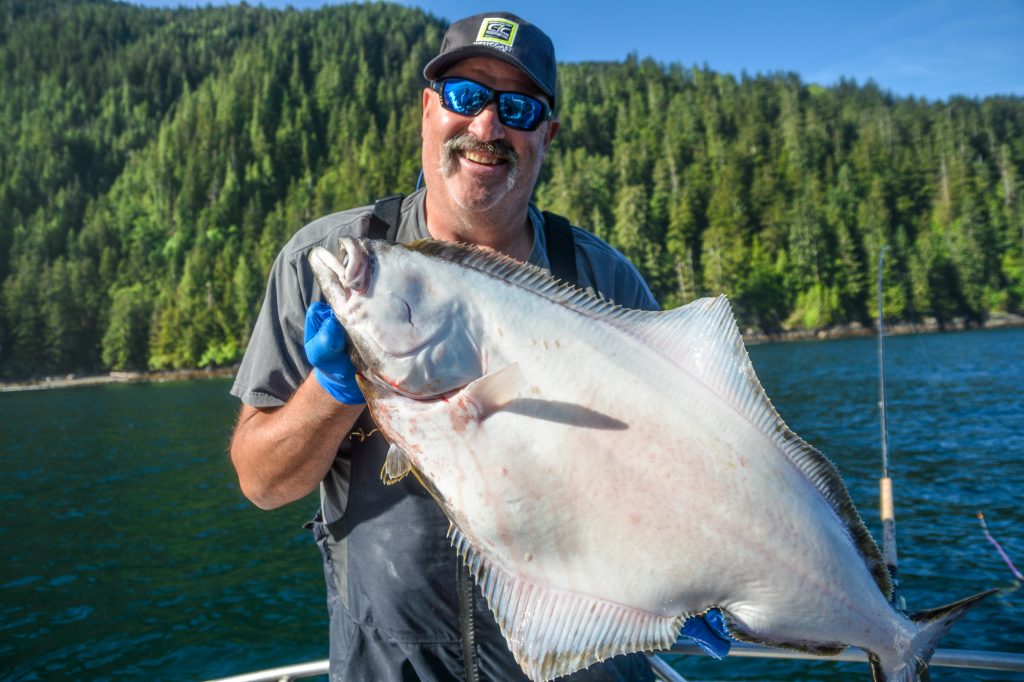
Eastern Strait of Juan de Fuca/Puget Sound (Areas 6-10 only) – Open April 22-May 22 and June 3-26 on Thursdays, Fridays and Saturdays; and May 28, 29 and 30. Western Strait of Juan de Fuca (Area 5) – Open May 6-22 on Thursdays and Saturdays; May 28, 29 and 30; and June 3-26 open Thursdays, Fridays and Saturdays. Neah Bay/La Push (Areas 3 and 4) – Open May 6-22 and June 3-26 on Thursdays and Saturdays; and May 28 and 30. Westport (Area 2) – Open May 6-23 on Thursdays and Sundays; and May 27 only; and could reopen June 17, 20, 24 and 27 if catch quota remains. Ilwaco (Area 1) – Open May 6-23 and June 3-27 on Thursdays and Sundays; and May 27.
In all marine areas the daily limit is one halibut with no minimum size limit. There is a four halibut annual limit in place.
While dates are set, it is likely the northern coastal ports might stay closed for public access just like last season due to COVID-19 issues.
“We haven’t confirmed if Neah Bay and La Push will be closed, but right now we’re assuming it’ll be closed for at least part of this year,” Hall said. “We structured the halibut days at Sekiu and Neah Bay to allow landing a fish in a closed port. It is less convenient than fishing directly from Neah Bay, but it didn’t seem to be a barrier last year.”
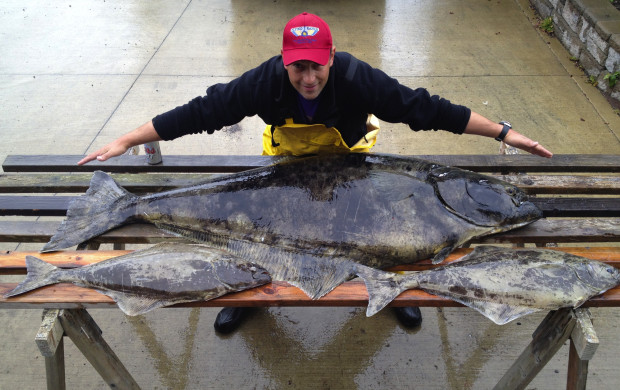
The onslaught of the pandemic in spring of 2020 led to a much different scenario with statewide fishing closures announced by WDFW on March 25 – the Governor’s Stay Home, Stay Healthy directive began on March 23 – just as some halibut seasons were set to get underway.
After careful consultation, WDFW reopened Puget Sound and Strait of Juan de Fuca for halibut fishing on a every other day schedule from May 20-June 29, 2020, to avoid overnight travel, and then shifted to three days per week from Aug. 6-Sept. 30.
The northern coast was open three days per week from Aug. 6-Sept. 30. The southern coast was open Aug. 6, and two days per week from Aug. 13-Sept. 30, plus a few add on dates near the end of the season.
“We didn’t come close to catching our quotas (in 2020), but it was super cool to have a late season fishery,” Hall said. “We added fishing days like mad in September to give people the opportunity to catch halibut but most had moved on to other fall activities and kids headed back to school. Bad weather and smoke from wildfires also played a role in the decrease.”
The halibut fishery closed at the end of September, and Hall pointed out, the final summary showed only 62 percent of the 178,622-pound quota was caught leaving 107,423 pounds on the table. In 2019, 90 percent of the quota or 270,024 pounds of halibut was landed.
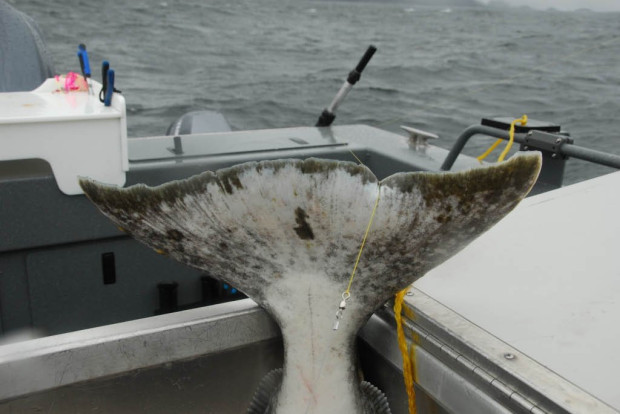
“It wasn’t a surprise given the fact that we didn’t get to fish in May off the coast, and we had planned to open Puget Sound Areas 6 to 10 in mid-April which was much earlier than in previous years,” Hall said. “By the time Puget Sound opened fishing had slowed down. I am excited to see how an earlier timeframe season for Puget Sound works out this spring since that is how we intended it to be in 2020. We feel this early opening could produce better fishing.”
The direction by fishery managers to create a more stable halibut fishery off the coast, Strait of Juan de Fuca and Puget Sound began in 2019 through 2021. It provides no last-minute changes or closures (outside of quotas being gobbled up), thus allowing anglers to make plans well in advance of the dates set forth.
“Our three-year plan has been in place since 2019 and will end after this season,” Hall said. “We have every expectation to extend that into the future. We’ll soon coordinate with tribal co-managers and then continue to work together with scientists and stakeholders to see if we can keep this agreement in place.”
WDFW will send out an official news release about 2021 halibut seasons in March. Details can be found at https://wdfw.wa.gov/fishing/regulations/halibut.
Big changes for coastal bottomfishing with more liberal catches
Start sharpening your hooks to pursue lingcod and other bottomfish off the coast!
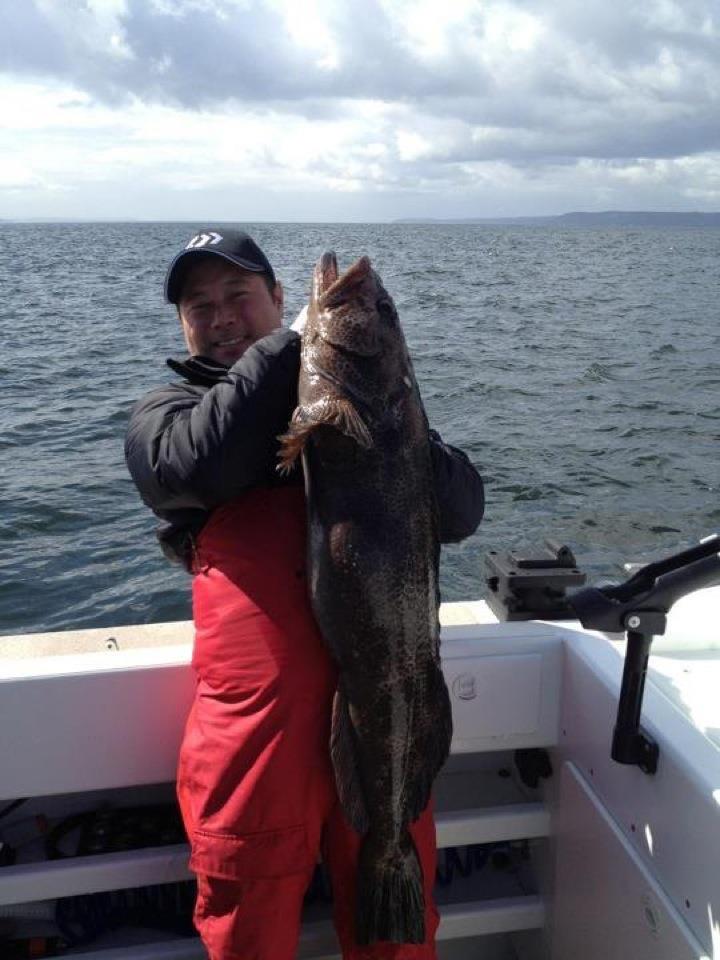
Ilwaco, Westport and La Push (Areas 1-3) and Neah Bay (Area 4 west of Bonilla-Tatoosh) are opening for lingcod and bottomfish from March 13 to Oct. 16.
Neah Bay (Area 4 east of Bonilla-Tatoosh) is open year-round for bottomfish and March 13 to Oct. 16 for lingcod.
The coastal lingcod daily limit is two per angler with no minimum size restriction. Anglers should consult the WDFW website on catch limits and restrictions for rockfish and other fish species. The retention of yelloweye rockfish is prohibited in all Marine Catch Areas.
The good news this season is more rockfish species appear to be rebounding and the top story back in 2019-2020 – especially off the northern coast – was the improved status of yelloweye rockfish.
This will allow WDFW to back away from the 20-fathom restriction off Neah Bay, La Push and Westport when halibut fishing is open.
“We’ve got some pretty big changes in the 2021 and 2022 bottomfishing seasons,” Hall said. “It is so exciting to see some rockfish populations like yelloweye rebuilding much faster than anticipated and this will provide new opportunities for fishermen. We’ve had the 20-fathom restriction in place for 15 years to protect yelloweye, but now we’re taking precautionary steps forward, which we’ve developed during this biennium cycle.”
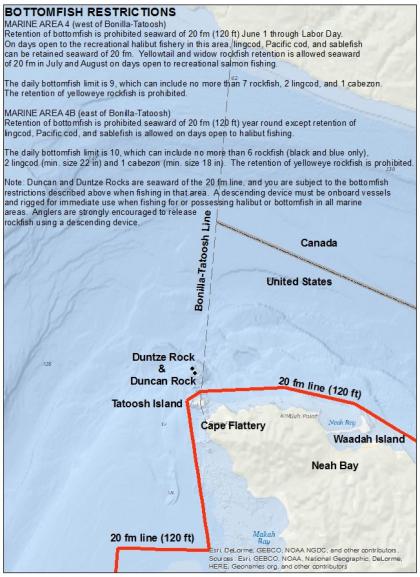
In La Push and Neah Bay (Areas 3 and 4 west of the Bonilla-Tatoosh line) effective June 1 to July 31 sport fishing for bottomfish is prohibited seaward of a boundary line approximating the 20-fathom (120 foot) depth contour. Beginning June 1 – on days halibut fishing is open – bottomfish can be retained seaward of 20 fathoms for lingcod, sablefish, Pacific cod, bocaccio, silvergray rockfish, canary rockfish, widow rockfish and yellowtail rockfish. Yellowtail and widow rockfish retention is allowed seaward of 20 fathoms at all times on July 1-31.
In Neah Bay (Area 4B east of the Bonnilla Tatoosh line) sport fishing for bottomfish is prohibited year-round seaward of a boundary line approximating 20-fathom. On days open for halibut, no bottomfish except lingcod and Pacific cod can be retained seaward of the 20-fathom line. Yellowtail and widow rockfish retention is allowed seaward of 20 fathoms on days open to sport salmon fishing in July and August.
In Westport (Area 2), sport fishing for lingcod is prohibited seaward of a boundary line approximating the 30-fathom depth contour from May 1-31. The retention of lingcod seaward of the 30-fathom line is allowed on days the primary halibut season is open.
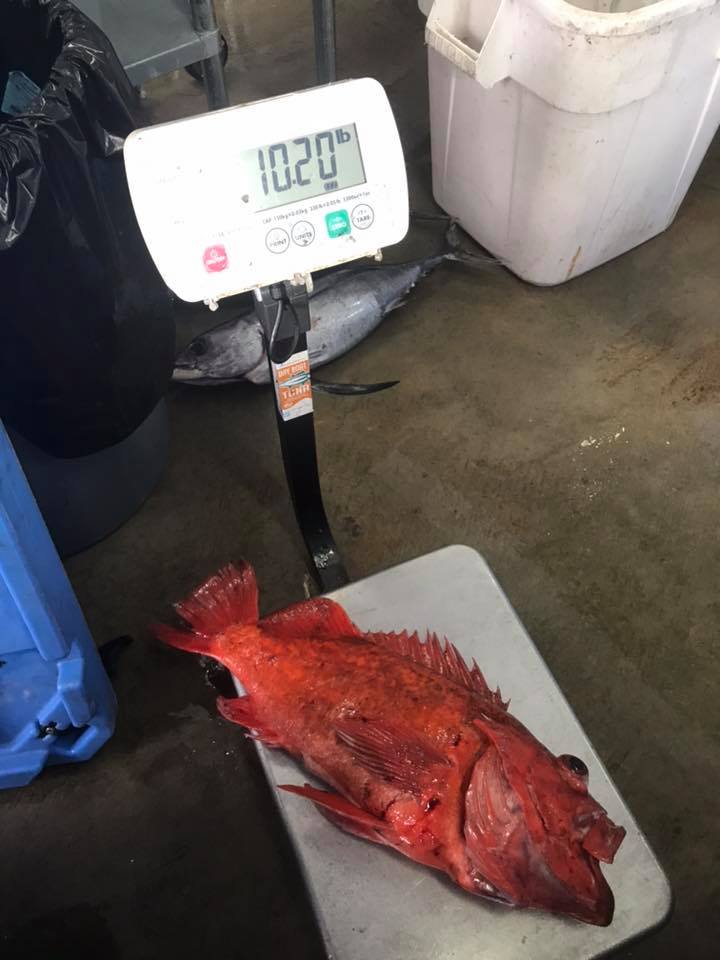
At Ilwaco (Area 1) on days open to the all-depth halibut fishery, anglers can retain sablefish, Pacific cod, flatfish species, lingcod, yellowtail rockfish, widow rockfish, canary rockfish, redstriped rockfish, greenstriped rockfish, silvergray rockfish, chilipepper, bocaccio, and blue/deacon rockfish north of the Washington-Oregon border. The retention of yelloweye rockfish is prohibited.
The deepwater lingcod restriction offshore of Ilwaco and Westport in Areas 1 and 2 (see specific areas on WDFW website) will be lifted from June 1-15 and Sept. 1-30.
Anglers should also carefully read up on personal use fishing regulations including possession limits when fishing in waters south of the Washington border.
“We plan to work more closely with Oregon in the future to get closer aligned on what you can keep in Oregon waters and bring back to Washington ports,” Hall said.
For bottomfishing details, go to https://wdfw.wa.gov/fishing/regulations/halibut.
Word on coastal razor clam
It appears the chance of a coastal razor clam season happening anytime soon is fading fast and spring digs could be in jeopardy too.
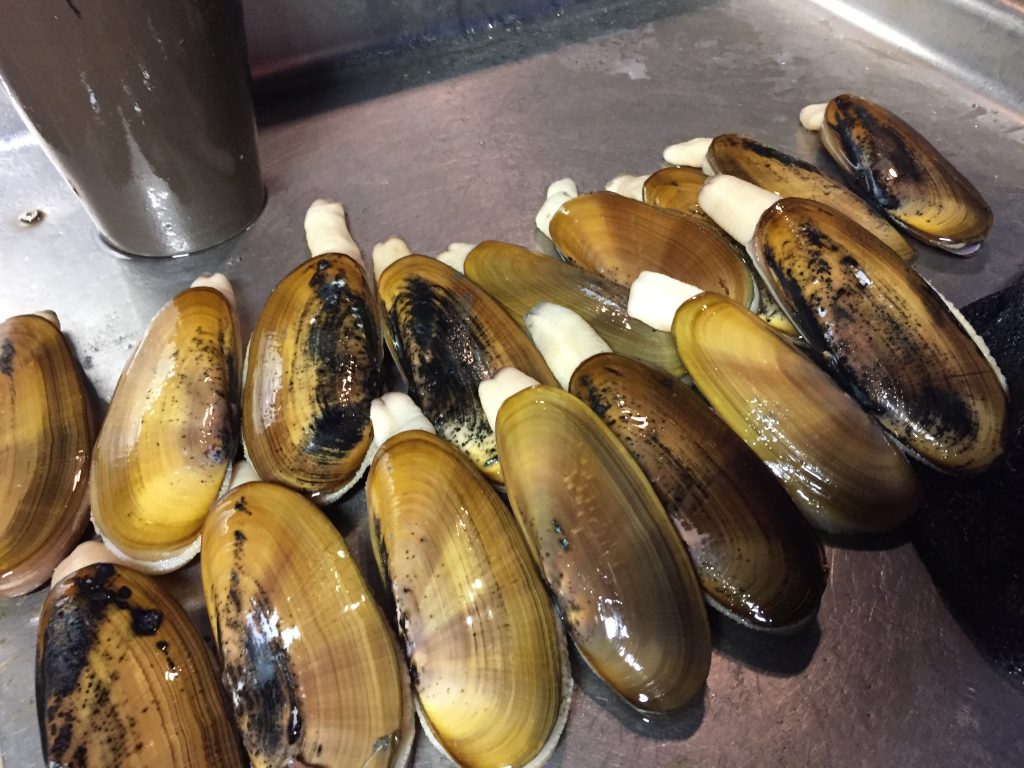
The latest marine toxin test results collected on Feb. 8 by WDFW shows very little change. No further clam digging dates will be planned until domoic acid levels drop below the action level.
In three of the four major domoic acid events that occurred in the fall (1991-92, 1997-98 and 2002-03), domoic acid levels in razor clams remained evaluated through the end of the season.
In three of the four major domoic acid events that occurred in the fall (1991-92, 1997-98 and 2002-03), domoic acid levels in razor clams remained evaluated through the end of the season.
All razor clam samples collected must test under the action level of 20 parts per million (ppm) for domoic acid on both of two required sample collections, and must be spaced seven to 10 days apart.
Testing is conducted every two weeks. No paralytic or diarrhoeic shellfish poisoning (PSP/DSP) had been detected on any beach.
Test results – Long Beach northern section, 56ppm up from 22 ppm in previous sample on Jan. 28. Twin Harbors middle section, 49ppm up from 30 ppm. Copalis southern section, 50ppm up from 27 ppm. Copalis middle section, 28ppm down from 32 ppm. Copalis northern section, 23ppm down from 49 ppm. Mocrocks middle section, 19ppm down from 30 ppm. Mocrocks northern section, 34ppm up from 33 ppm.
In past years, if a particular beach had shown levels were below the threshold then WDFW would open a specific beach even if others were still closed, but the pandemic has created a roadblock to opening them individually.
Razor clams are following the historical pattern of slowly depurating (losing)
domoic acid and domoic acid levels continue to “bounce around” some, as they have in past events.
All Oregon coastal beaches still remain closed and marine toxin levels for domoic acid are even higher than Washington. On Clatsop Beach near Seaside the most recent test shows it at a staggering 140ppm.

